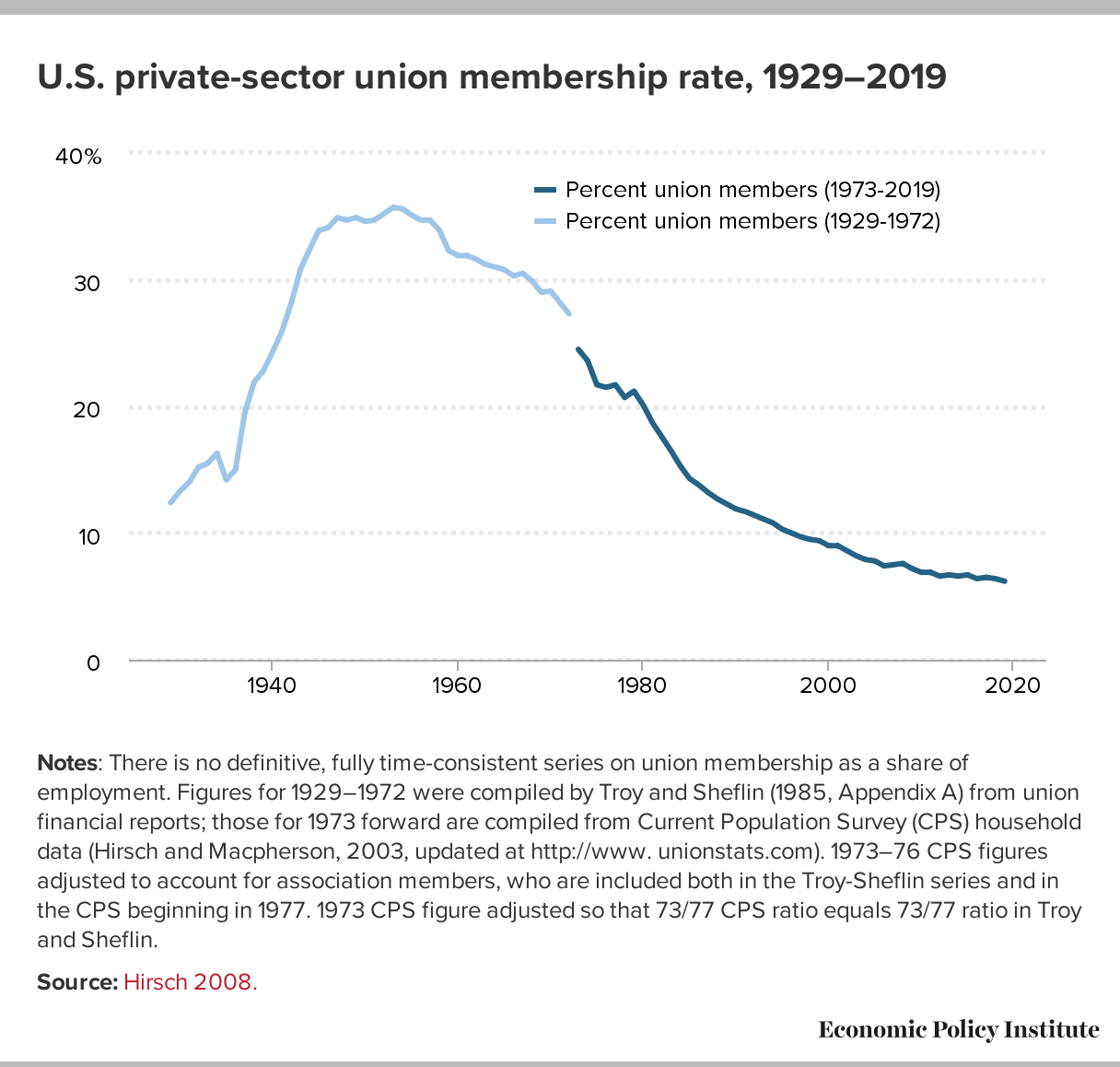


It’s Complicated
And then some
Sometimes you read that about relationships. Right now it applies to the relationship all of us have with the economy.
This headline from The Washington Post seemed to sum it up: “Pick your economy: Booming labor market or fizzling growth”
Yes
It’s hard to wrap your head around economic conditions that are so seldom seen in tandem.
The backdrop for the recent wage increases is very complicated, which is frustrating because everyone would like a very simple answer, and even easier solutions.
A recent paper from The Hamilton Project examines where all the workers have gone. In the most simplistic of summaries:
- • The U.S. Labor Force is down between 3 to 3.5 million people from what was expected
- • Over 250,000 pandemic-related deaths were those aged between 18 and 64
- • Government policies have limited immigration
- • The child-care crisis worsened during Covid and has diminished women’s labor force participation
Before panic sets in about a recession, perhaps look for opportunity? If other companies are laying off, it could be for a host of reasons that has nothing to do with your organization. External economic pressures can expose internal flaws in firms. Maybe they’ve just laid off someone with that specific skill set that you haven’t been able to find?
Remember, there are still approximately two job openings for every available person, which gives people the confidence to leave jobs. As the Atlanta Fed’s chart shows us monthly, the job switchers make more than the job stayers.

New Trend? Old Trend.
When this headline appeared … what came to your mind?
If you’re from Pennsylvania, did you think of Hershey?
If you’re from Chicago, did you think of Pullman?
Some might have some less-than-charitable thoughts about company housing.
If you are a fan of Cadbury’s chocolate, you might know all about the sweet village that the company constructed for their workers in Bournville, England (which inspired Hershey). One of Unilever’s predecessors, Lever Brothers, also had a stellar community built for their workers called Port Sunlight.
It seems to be a toss-up to determine where the first company-sponsored housing was built: Quarry Bank Mill (near today’s Manchester airport) or New Lanark in Scotland, were both founded in 1784 and both provided housing and better nutrition than was the norm at the time. The cottages pictured were built in 1824 as housing for the Quarry Bank Mill near Manchester.
Seems the owner of New Lanark might have devised the original economic development deal as well. The owner lured a boat load, literally, of people that had been emigrating to North Carolina when their boat crashed. Stay here, and I’ll give you a job AND housing.
Seems some things never change …

COLA
There’s a word that compensation consultants of a more recent era have shunned for at least two decades: COLA
And not in favor of the unCola – in favor of NO COLA.
In fact, the consultants at CHRC have spent a fair amount of time explaining the differences between
Merit Budgets
and
COLA – Cost of Living Adjustments
Until their faces turn an unattractive shade of blue.
The phrase that gets economists animated is “wage-price spiral” … and many are turning an unattractive shade of red believing that the current wage increases are going to take the U.S. to the kind of wage-price spiral that the U.S. economy experienced in the 1970s.
So much to our delight, last week Mitchell Hartman on Marketplace did a story that featured the COLA that we don’t like to imbibe. More importantly, in addition to economists that are convinced we are headed for the spiral, he featured two that pointed out key distinctions of what separates the current situation from that in the 1970s.
Ross Mayfield of Baird points out that unlike the 1970s, the worker’s demands aren’t driving inflation, supply constraints caused by the war in Ukraine and Covid are. Economist Joe Brusuelas underscores the statistic that undergirds Mr. Mayfield’s point:
“At that time, labor unions represented approximately 1 in 4 American workers.”
Why were those COLAs so worrisome? They were built right into those union contracts for years at a time, regardless of market conditions. That was a very large factor in the wage-price spiral
How many Americans belong to a union right now?


Reach for the STARs
Our February musings have encouraged looking beyond your own environment — whether a groundhog emerging to see his shadow, imagining beyond deep snow drifts to the intricate physics of a single flake, and now urging you to gaze at STARs …
STARs is an acronym for Skilled Through Alternative Routes.
The Burning Glass Institute recently published The Emerging Degree Reset. While employers are finally understanding that eliminating the degree requirement for some of their jobs will give them access to a broader labor pool, there will be a burden as well:
“A reset requires employers to be more articulate about the skills they require for the job”
Article after article on this topic concedes that employers have used the degree requirement as a proxy for the competencies that they assume a college degree imparts, versus articulating or probing for those behaviors in the interview process.
How many more workers?
In a recent story on Marketplace, Papia Debroy, who leads research at the nonprofit Opportunity@Work said:
“There are more than 70 million workers in our U.S. labor force today who are skilled through alternative routes — through community college, through military service. Most often they’re learning on the job…”
If you’re wondering what sort of employers might be looking for STARs, the piece interviews Jimmy Etheredge, CEO of Accenture North America, who is an advocate.
“The assumption has always been, ‘I need to look for people that have a technical background, and then the easier thing to teach is the soft skills,’” “It’s easier to teach them the technology, and they already have amazing skills for doing client-customer interaction,” Etheredge said.
If you’ve ever seen a detailed image depicting the crystal structure of a snowflake, it didn’t come from a college graduate. Those photos taken under a microscope in the bitter cold were taken by a farmer nicknamed Snowflake Bentley who had all the competencies like curiosity, initiative, and determination – but lacked the technical tool to capture the images. Once armed with that technology, the sky was his limit, and his laboratory.

Totally Rewarding
Some of us have been predicting this.
Once the hourly wage reached a certain point, companies would have to augment their offer with other forms of:
• Rewards
• Compensation
• Remuneration
Whatever you want to label it, that day is here.
A recent Forbes article suggested that there are four things that employers should be considering to augment whatever they are currently paying their employees:
• Reimbursement for work-from-home expenses
• Increased focus on employee financial health
• Student Loan Benefits
• Sick time and personal leave for remote workers
The article stresses that it is important to understand the value these benefits have for YOUR cohort of employees, if they will have a bang for your buck. The statistics on productivity gains from reducing employees’ stress about financial worries certainly seem to be worth the investment.
A recent article in Bloomberg reported that Apple stores will start offering
“Part-time employees … as many as six paid vacation days for the first time. Another first: They’ll get paid parental leave. That benefit will cover up to six weeks and will include the ability to gradually ramp up work time for the first four weeks back.”
Joseph B. Fuller and Manjari Raman of Harvard Business School have just released a study called: Building from the Bottom Up: What business can do to strengthen the bottom line by investing in front-line workers. The executive summary of their work, which started prior to the pandemic, was that few in the Executive Suite
“…do little to understand or address the reasons why low-wage jobs are hard to fill and low-wage workers hard to retain. Most employers show little engagement in workers’ lives …”
Based on the changes Apple is now making in their stores, and other employers are crafting or contemplating, perhaps upper management may now be starting to understand.
